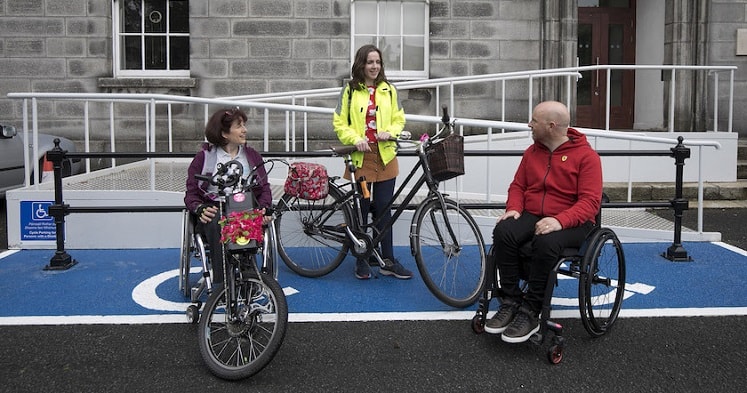Cycle parking company Turvec approached Wheels for Wellbeing last month, asking for some guidance for their blog post, titled “How Can We Design Accessible Cycle Parking?”.

Image credit: Trinity College Dublin
We gave them an insight into some of the many problems that Disabled people face when it comes to existing cycle parking facilities, and the changes we would like to see made in the future. Turvec’s blog post has now gone live – here are some key snippets:
First off, we told Turvec all about the barriers faced by Disabled cyclists, and how “Accessible cycle parking is as important as accessible cycling infrastructure for Disabled cyclists […] If a Disabled cyclist cannot be sure that they will be able to leave their cycle somewhere secure when they reach their destination, cycling will be limited to leisure or exercise, rather than for everyday journeys.”
“Many forms of enclosed cycle parking – such as hangers, lockers, or larger secure cycle shelters – require a level of mobility and physical strength that a Disabled cyclist may not have (for example, the ability to open heavy metal gates, or push a cycle round a restricted space), or be located too far from the final destination.”
When it comes to dimensions, we mentioned that: “Ideally, accessible cycle parking would provide sufficient room to allow a Disabled cyclist to enter, turn, and leave a parking bay without dismounting: most Disabled cyclists find cycling easier than walking, and may struggle to manually turn or lift their cycle.”
Security is another issue that Wheels for Wellbeing seeks to address through its campaigns work, as “Non-standard cycles can be substantially more expensive than bicycles. And crucially, Disabled cyclists are more likely to rely on their cycle to stay mobile. […] Theft of or damage to a non-standard cycle is therefore both prohibitively expensive and prevents independent mobility for the cyclist, unlike loss or damage to a standard cycle.”
Click here to read Turvec’s whole blog post about designing accessible cycle parking today!
